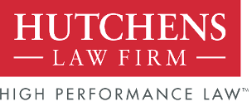“A man’s home is his castle” is a common saying that is even reflected in the Bill of Rights. Another common saying is that there are but two certainties in life – death and taxes. So what happens “tax-wise” when one decides to sell his castle? Although there are many different tax consequences when selling a home, here’s a brief and broad overview of the tax ramifications when you sell your home.
IS IT YOUR PRINCIPAL RESIDENCE?
As a general rule, a taxpayer may exclude up to $250,000 of gain on the sale or exchange of his principal residence every two years. Married taxpayers filing jointly and qualifying surviving spouses may exclude up to $500,000 of gain.
Your principal residence is determined by the IRS based on a “facts and circumstances test.” If you own or live in more than one home, the test for determining which one is your main home is a “facts and circumstances” test. The key factor: where do you spend the most time? Other factors can enter the picture as well, so the more of these you can check as yes, the more likely it is your main home:
It is the address you list for your:
- U.S. Postal Service
- Voter Registration Card
- Federal and state tax returns
- Driver's license or car registration
The home is near:
- Where you work
- Where you bank
- The residence of one or more family members
- Recreational clubs or religious organizations of which you are a member
HOW LONG HAVE YOU “USED” THE RESIDENCE?
A taxpayer must also satisfy the “ownership and use test” with respect to the property. This means that during the five-year period ending on the date of the sale, the taxpayer must have:
- Owned the home for at least two years (the ownership test),
- Lived in the home as his or her main home for at least two years (the use test), AND
- During the two-year period ending on the date of the sale, the taxpayer must not have claimed an exclusion on a gain from the sale of another home.
Under the Use requirement, the selling taxpayer must have used the property as his principal residence for a cumulative total of two years out of the past five years prior to the sale or exchange. To satisfy the Use test, temporary absences – such as vacations – count towards the occupancy requirements.
In addition, the five-year period may be suspended for up to ten years of absence for service on extended duty for military service.
A married couple’s exclusion is determined on an individual basis. For instance, if Spouse A is eligible for the exclusion, but Spouse B used the exclusion within the previous two years, Spouse A is entitled to a maximum exclusion of $250,000. Spouses who satisfy all of the eligibility rules may exclude up to $500,000 of gain on their joint return.
REDUCED EXCLUSION
Notwithstanding the above, a partial or “reduced exclusion” may be available for taxpayers who fail to meet the tests mentioned herein. The reduced exclusion may be available based on the facts and circumstances of the taxpayer as determined by the IRS. In order to meet the facts and circumstances test, the sale or exchange of the principal residence generally must be based on a change in (1) place of employment, (2) health, or (3) other unforeseen circumstances.
A change in place of employment applies if the new place of employment for the taxpayer is at least 50 miles farther from the primary residence that is sold.
Health reasons include the taxpayer selling a principal residence in order to obtain, provide, or facilitate the cure or treatment of the illness of the taxpayer or related individual.
Unforeseen circumstances generally include one’s death, loss of employment, change in employment status, divorce, or other events determined by the IRS. To compute the reduced exclusion, a fractional formula is used by multiplying the maximum allowable exclusion by a fraction based on occupancy time.
As you can see, there are numerous exceptions to the general rules regarding the exclusion of gain for a principal residence. As such, it is highly recommended to seek guidance from a qualified tax attorney or CPA prior to determining that you qualify for gain exclusion.
Published by Hutchens Law Firm on April 18, 2016
